Take a step back and look at yourself in a full-length mirror. What do you see? Your silhouette comes with beautiful coloring right out of the gate. Your eyes, hair, and skin all have tones and hues that work together to form a unique you. When you dress with color in harmony with your natural color pallet, you will feel more vibrant. You will feel more like you.
Finding the colors that complement your particular tint will positively impact your confidence. You can go from looking ill to illuminated with a simple swap of color tone—even within the same “color.”
The take-away here is to be conscious of your colors because they make a difference. Look in your closet. Is there a specific color you tend to gravitate to most because you like the way it makes you look (not because someone told you it was your color, but that you want the way it brings out your eyes)? It could be because subconsciously, you know they work with your coloring best.
Color is challenging because it’s emotional. Sometimes we love a specific shade because it makes us happy or we think it’s beautiful. But, it may not complement our natural hues. You just need to navigate whether your pallet should be filled with jewel or earth tones. Fear not. You can still wear the entire rainbow.
The colors you choose to surround your face are most important because out of all your features, your face is where people will be paying the most attention. It’s also the place where you have the opportunity to enhance your hair and eyes most.
Color Theory
What is color theory? Color theory is a set of rules and guidelines that help communicate with an audience. It can be broken into four parts – color groups – color value – color tone – and color formulas/schemes. When you understand these rules and procedures, you can use this knowledge to alter the human mind and perception.
Color Wheel
Back in the 17th century, a man who went by the name of Sir Isaac Newton discovered the spectrum of light. Through his research, he developed the first-ever color wheel.
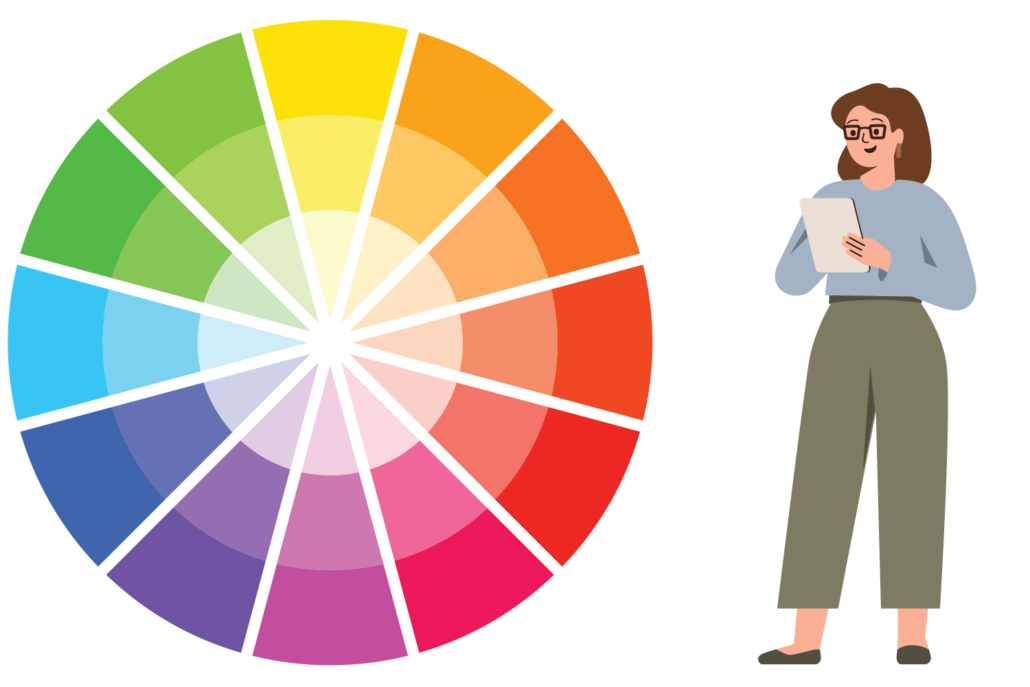
The color wheel shows an interpretation of color. It provides a tool that we can use to define color relationships and bring balance and harmony to design.
These colors can be split into three groups:
Primary (red, blue, yellow)
Secondary (mixes of primary colors)
Tertiary (or intermediate – mixes of primary and secondary colors)
Knowing these groups and referencing the color wheel is helpful to start when bringing color into designs.
Color Value
The color value is when you take a primary, secondary, or tertiary color and make it brighter or darker.
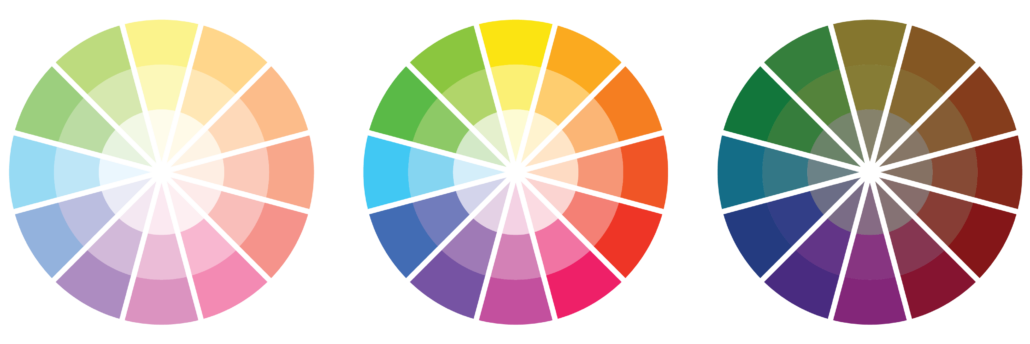
Adjusting the value of a color can bring depth, contrast, and balance to a design.
Check out this tool to find new color hues >>>
Color Tone
So what do all these colors mean? Let’s talk about the emotion and feeling that each shade can compose.

Shades:
- White – Purity / Sense of Space / Balance
- Black – Powerful / Edgy / Sleek
- Gray – Neutral / Timeless / Practical
Colors:
- Red – Romance / Intensity / Energy
- Orange – Happy / Warmth / Enthusiasm
- Yellow – Cheerful / Optimism / Friendliness
- Green – Fresh / Growth / Harmony
- Blue – Calm / Security / Confidence
- Purple – Regal / Prosperity / Sophistication
- Brown – Stability / Comfort / Organic
- Pink – Love / Gentle / Fun
Color Schemes
Referencing the color wheel, color guidelines, and color tone, we can start to build a color scheme by using the formulas below:
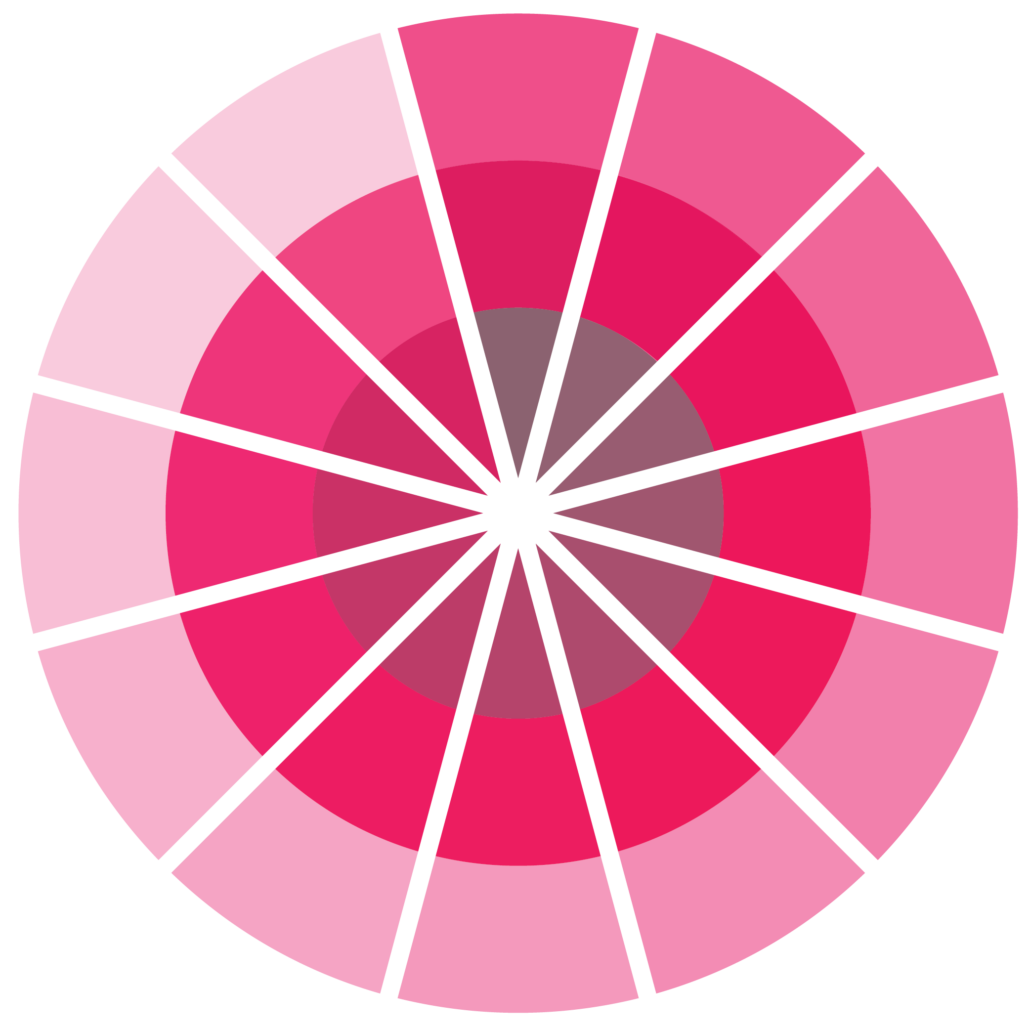 Monochromatic – using one color, adjusting the hue to create color variations.
Monochromatic – using one color, adjusting the hue to create color variations.
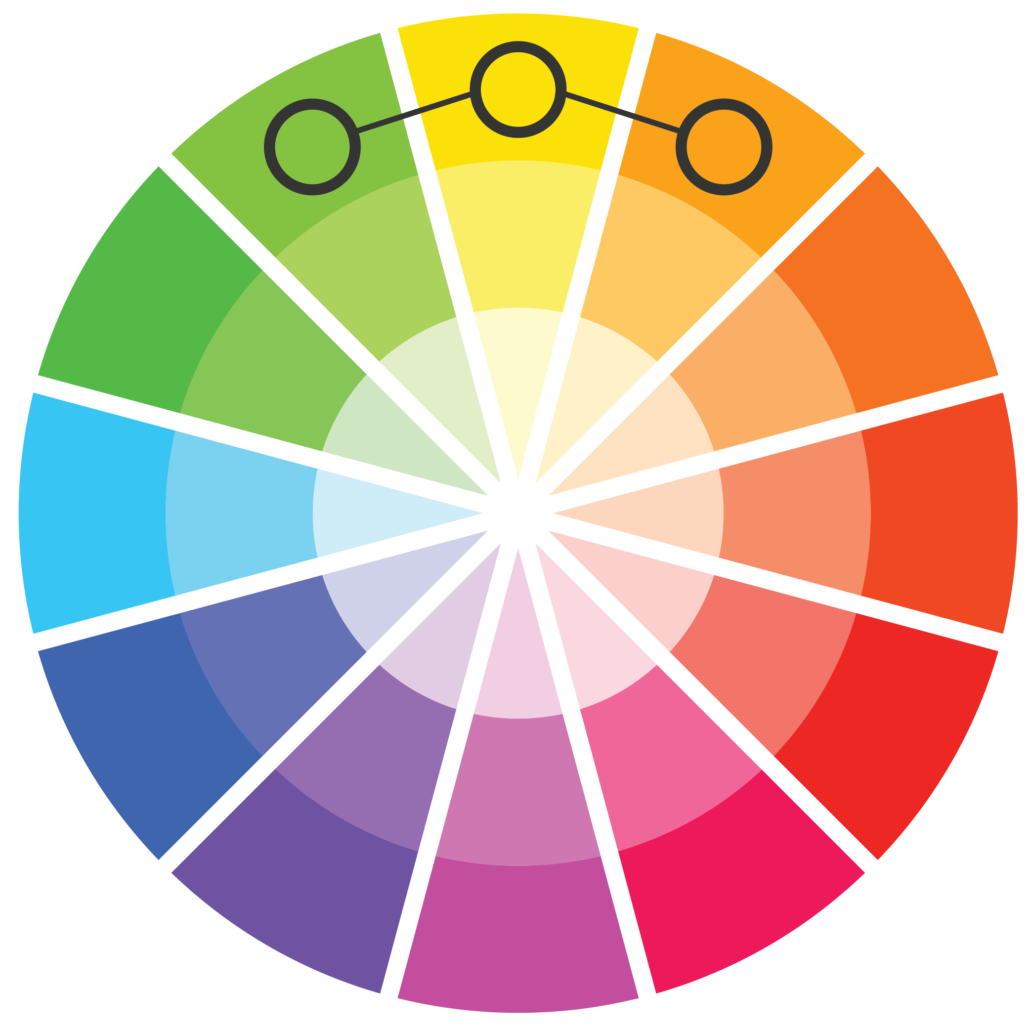 Analogous – three colors next to each other on the color wheel.
Analogous – three colors next to each other on the color wheel.
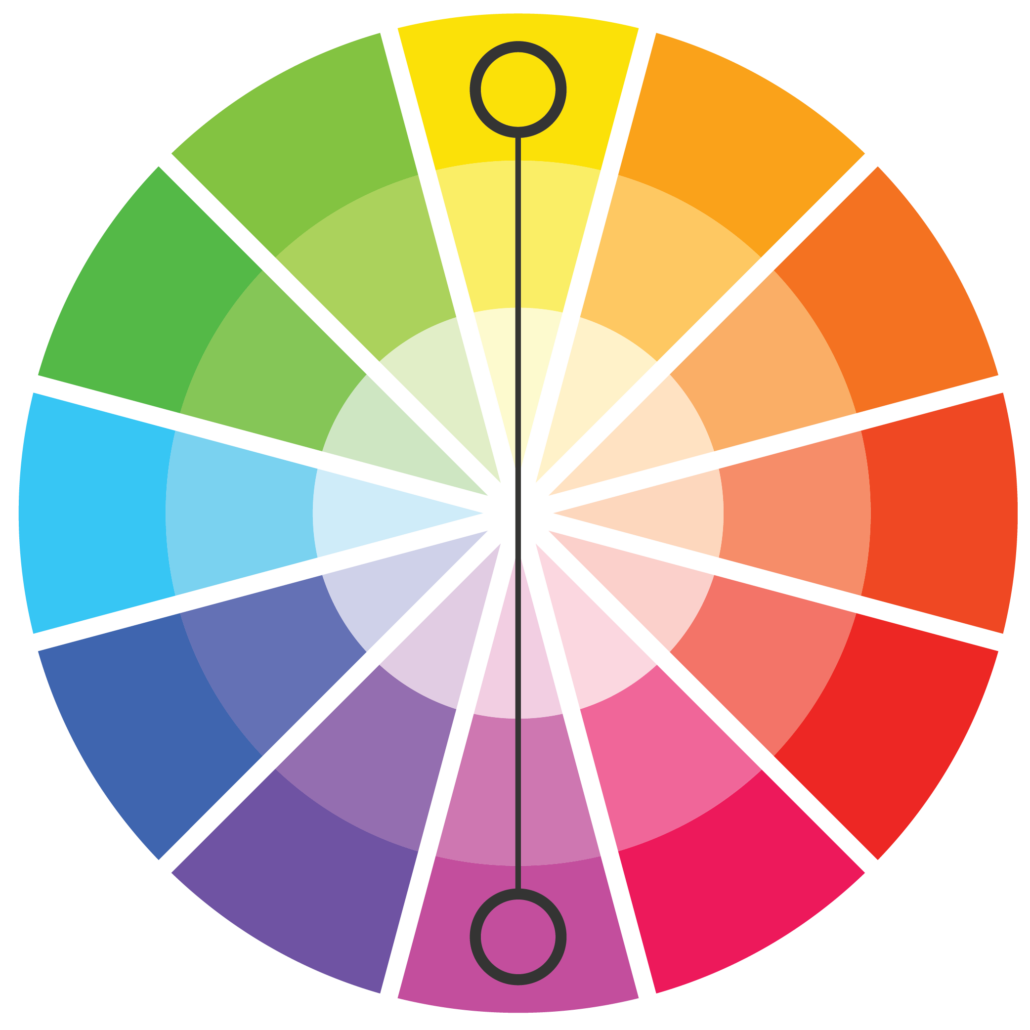 Complementary – colors directly across from each other on the color wheel.
Complementary – colors directly across from each other on the color wheel.
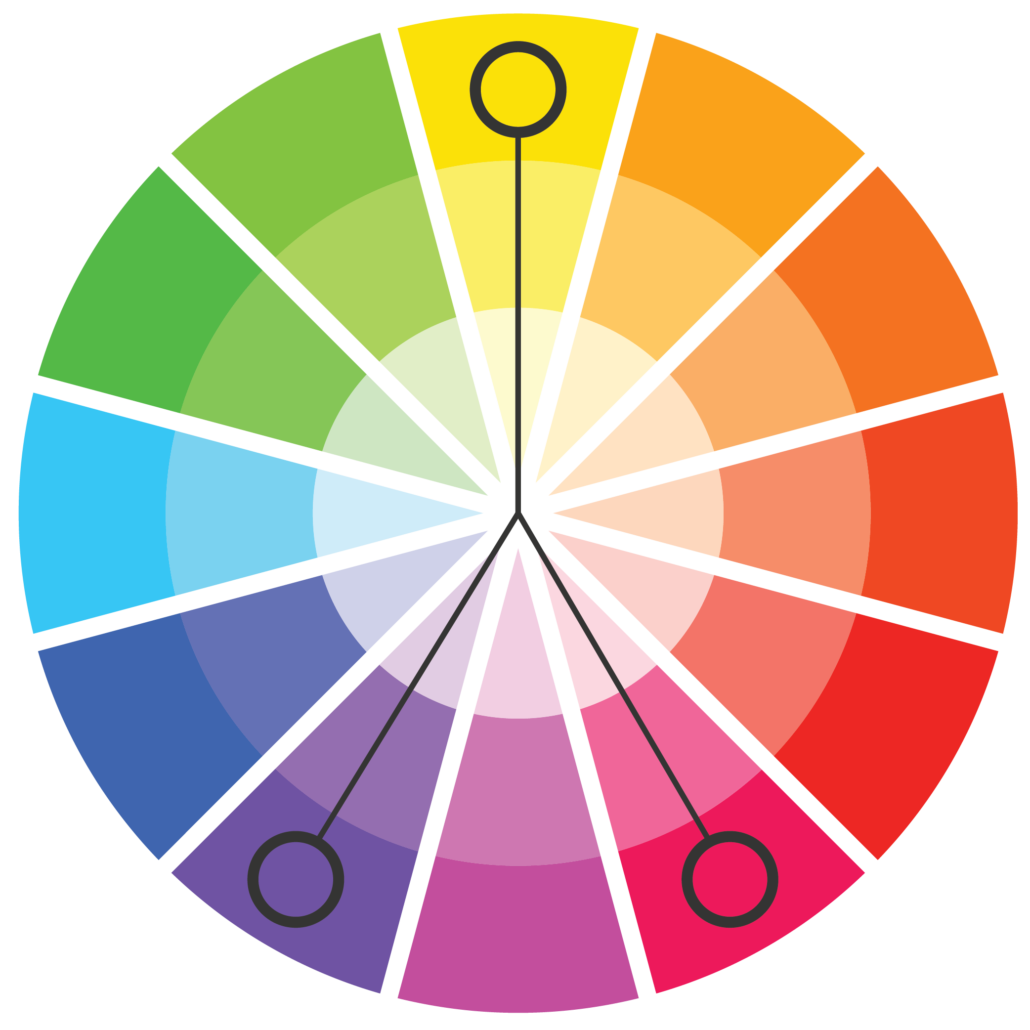 Split Complementary – colors on either side of the complementary color.
Split Complementary – colors on either side of the complementary color.
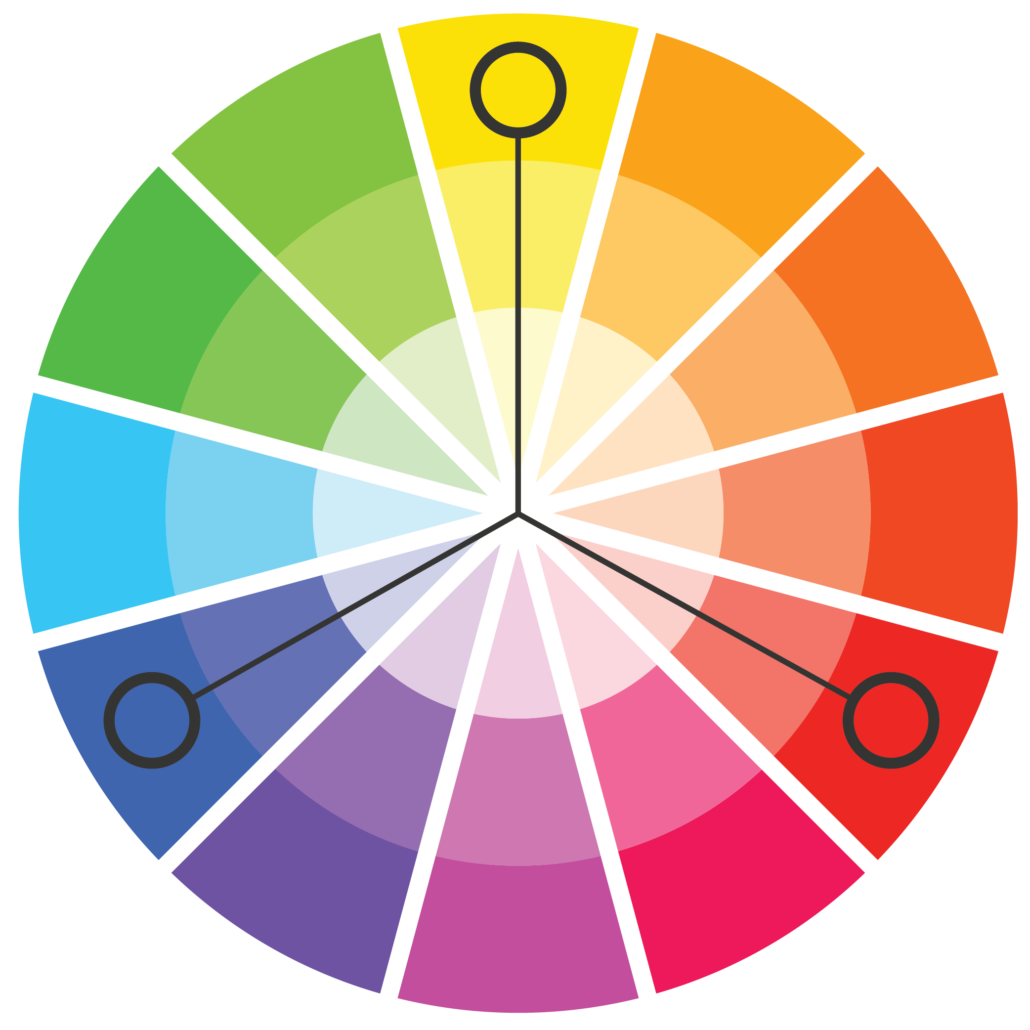 Triadic – using three colors evenly spaced on the color wheel.
Triadic – using three colors evenly spaced on the color wheel.
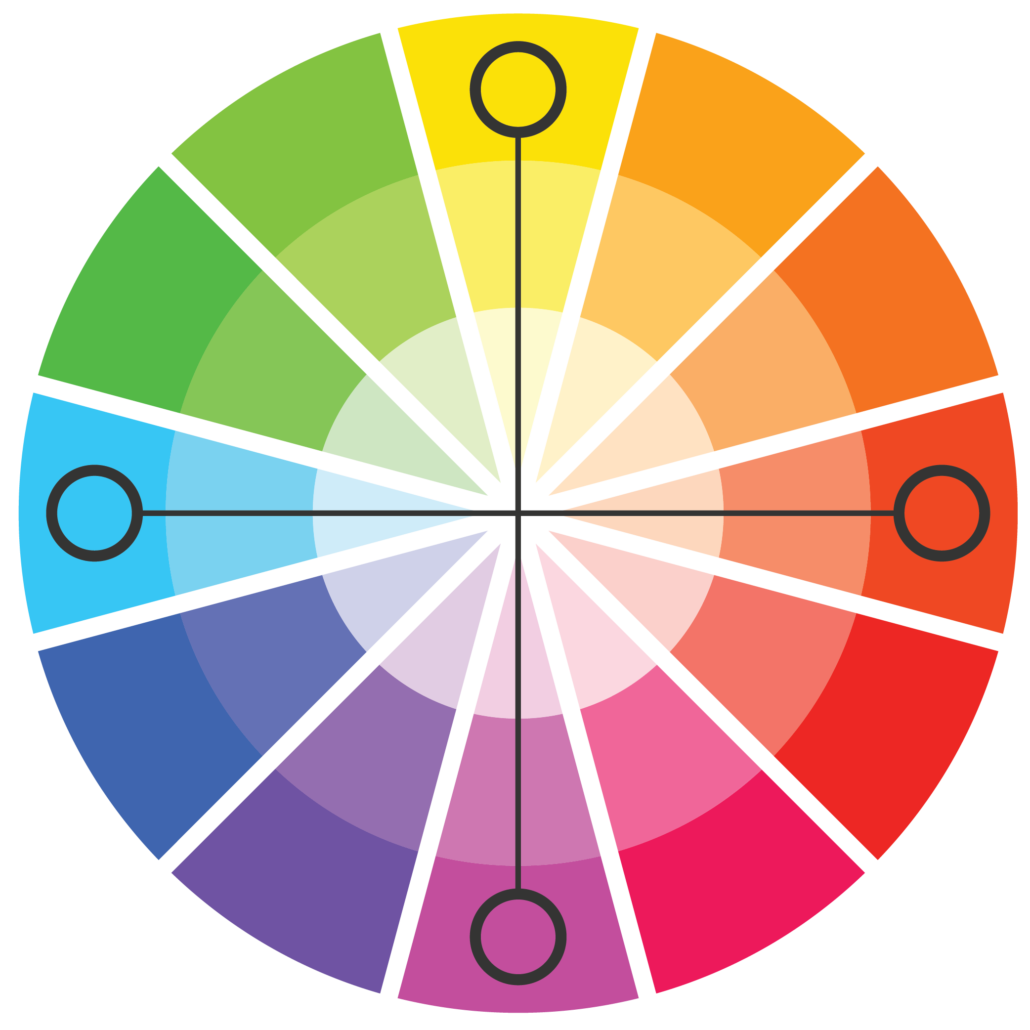 Tetradic – combining two sets of complementary colors.
Tetradic – combining two sets of complementary colors.
Tips + Tricks to Color
Be consistent. Once you find the colors you want to use for your brand, stick with them! Colors are a vital factor of a brand. They give you recognition. Think about the colors that come to mind when thinking of McDonald’s, Starbucks, Facebook, and so on. They have defined colors that help brand recognition and convey their authority.
Neutrals are necessary! White space is not a waste of space on your website. In fact, it plays a significant role on your screen. It allows for breathing room, space for the eye to rest, and room to visually collect information provided. But the key is balance. Too much white space and your site could look like it lacks, and not enough, and it could hurt your visual voice.
Think about your audience. Who are the people you are selling your service or product to? Do they have the same perception of color as you do? Take the time to understand why different people, cities, and countries have different perspectives on color and align that perception with your brand.
You deserve to be celebrated as you are. Mr. Rogers said it:
I like you as you are
I wouldn’t want to change you
Or even rearrange you
Not by far


